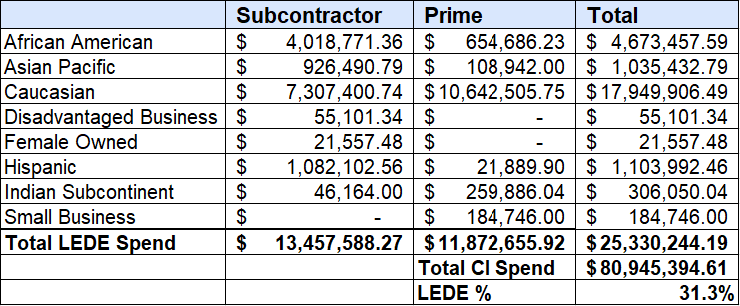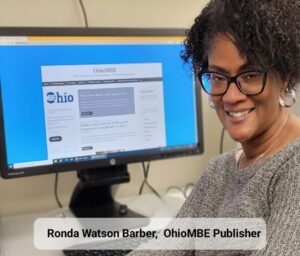Columbus City Schools spent more than $80.9 million in Capital Improvement projects. Of that, about $25.3 million went to certified LEDEs (Local Economically Disadvantaged Enterprises). That’s 31.3% — and on the surface, it looks like they hit the goal.
But let’s be clear — goals mean nothing if the money doesn’t go to the right businesses.

Caucasian-owned firms walked away with $17.9 million — that’s over 70% of the LEDE dollars.
Black-owned firms got $4.6 million — and only $654,000 of that was as a prime contractor. The rest? Subcontractor roles — which often means less money, less power, and fewer long-term opportunities.
Let’s sit with that:
🟩 White-owned LEDEs: $17,949,906.49
⬛ Black-owned LEDEs: $4,673,457.59
That’s a $13 million difference. In a district where the majority of the students are Black.
And let’s talk about women.
Female-owned businesses received just $21,557.48. That’s less than one-tenth of one percent of the $80 million spent. That’s not just a problem — it’s a disgrace.
This data is about Capital Improvement spending. So I have questions:
- Are the white-owned firms that received the majority of the contracts actually local? Are they located in the district? Do they pay property taxes that support Columbus City Schools? Are they invested in the success of this community?
- What does the Disadvantaged Business category represent?
- Why are women-owned businesses so grossly underutilized?
- What good faith efforts were made to reach these numbers?
- What outreach was done to include Black-owned and women-owned companies in these opportunities?
The Superintendent has promised to provide a more detailed report. I hope it includes honest answers — because right now, these numbers raise more concerns than confidence.
And I’ll say this without hesitation:
I don’t trust the Capital Improvement Director. His inclusion efforts don’t feel genuine. This is the same man who stood in front of Black vendors — who live in this city and support this district — and called Columbus “a city of poverty.”
How can someone with that mindset be trusted to implement an inclusion policy in good faith?
How can you claim to value local small businesses when you talk down to them?
CCS has a moral obligation to reinvest in the Black community, which makes up the majority of the district’s student population. Yet we continue to see white contractors eating at the public trough, taking the money out of the city — while Black taxpayers foot the bill. Many of our elders are struggling just to pay their property taxes, yet the money they sacrifice to keep the schools afloat is being sent to firms who don’t live here, don’t hire here, and don’t reinvest here.
This isn’t just about numbers. It’s about how Columbus City Schools spends public money, who benefits from it, and whether or not inclusion is real — or just for show.
The numbers don’t lie. But someone needs to be held accountable for what they mean.
—
✍🏾 Ronda Watson Barber
Publisher, OhioMBE
Advocating for real inclusion — not just window dressing
🔗 Read more columns at OhioMBE.com
Discover more from OhioMBE
Subscribe to get the latest posts sent to your email.
